When playing in tournaments or leagues, there’s often not that much space on the table and keeping all the stuff organised becomes a hassle.
After staying awake one night, I started to tinker with an idea of a TCG Companion Tray, a 3D printed tray that keeps a deckbox and some tokens in place that can be fit next to the playmat while playing.
I already have a stack of Hohyss’ token bowls and I use Ultimate Guard’s Deck Case 100+ deck boxes so I started with them as my baseline.
Version 1
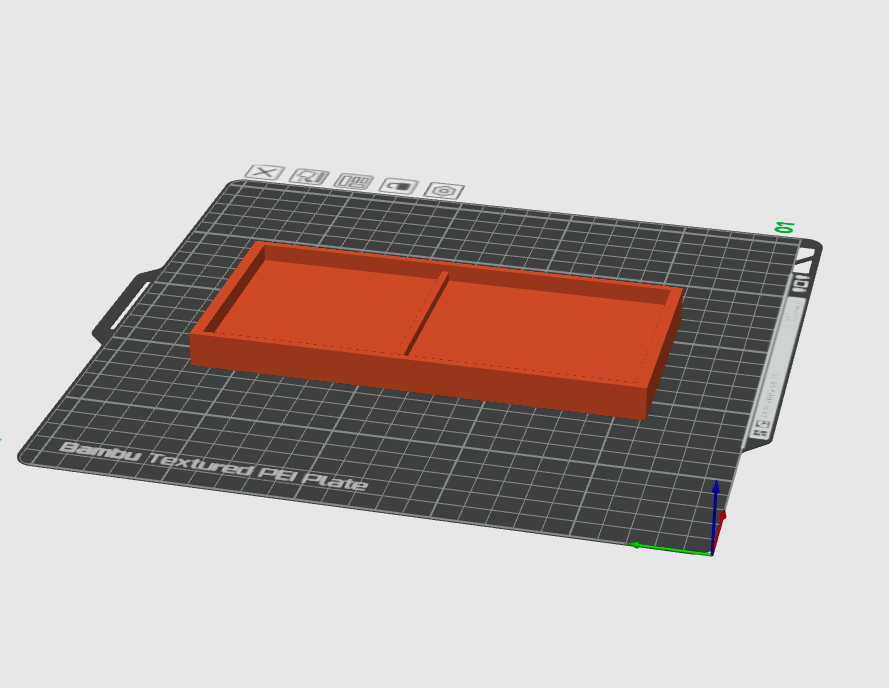
To start prototyping, I measured the deckbox and the bowl, designed a tray for those dimensions (+ a bit extra), added a small ridge to keep the deckbox in place and sent it to my printer.
My initial idea was to quickly print a rough sketch to see how I should adjust the basic dimensions before I design further. I tried to avoid putting in a lot of work and ending up down the rabbit hole only to realise some small detail that won’t work and having to start from scratch. It is a tradeoff between time & effort and filament.
While this version was printing, I also started thinking about wanting to have space for a pen and notes without making this unnecessarily large as size is a limitation here - especially width. Maybe I could add a space for keeping a pen and index cards standing up? It’s worth exploring at least.

Once the first iteration came out, the inner sizings were bit off. I can’t remember which side was meant for the deck box but one side was just slightly too small and the other was way too big. I want the deck box to fit snuggly in so it doesn’t move around or fall over if there’s any action on the table. For the owl, due to its tilted sides, I can make the entire tray a few millimeters narrower which is nice win.
As a first rough sketch, I’m happy with it. It does validate some of my assumptions about its usability and it shows that there’s a bit of work to do to make the dimensions better and for the next iteration, I can experiment with adding a “notes station”.
Version 2
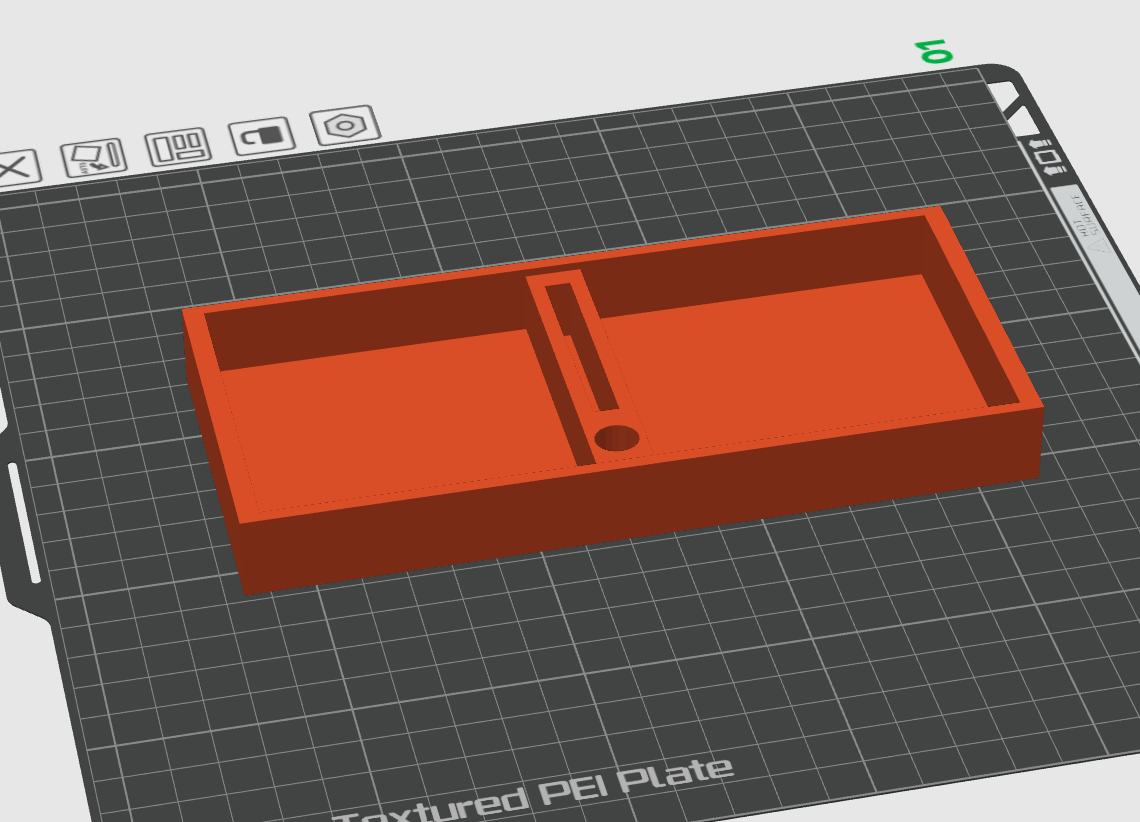
For the second iteration, I decided to try how it feels if I make the walls higher and added a section in the middle to keep a pen and a few small index cards.
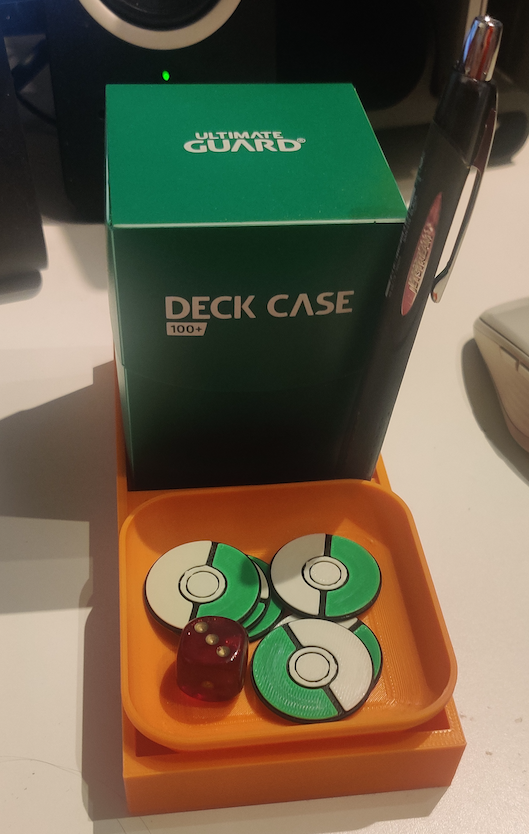
The dimensions got better on the second iteration and the deckbox area is really good now for this deckbox. The notes section in the middle was a dud: a pen needs much deeper hole to stay up right and pens vary so much on their width that I need to reconsider that approach.
The token bowl now rests on the edges which was quite nice and if you don’t have a bowl, you can put your tokens and dice directly into the area as well - for the final render though that one should have round inner edges though so scooping up stuff gets easier, similar to the bowl. For the next iteration, I’m thinking about trying out expanding the width a bit to fit a pen laying down and a longer notes paper section. I’m still worried about widening this given the limited space but I want to at least see how it would feel.
In an attempt to add the notes space, I had to increase the height of the walls a lot (and it still wasn’t enough) which only increase filament cost and print time without any benefits to the tray.
Version 3

For the third iteration, I ditched the idea of note taking space and tried out how it would work with one of these slide boxes by TuTu that I’ve been using to keep my dice and tokens (burn, poison, ability used).
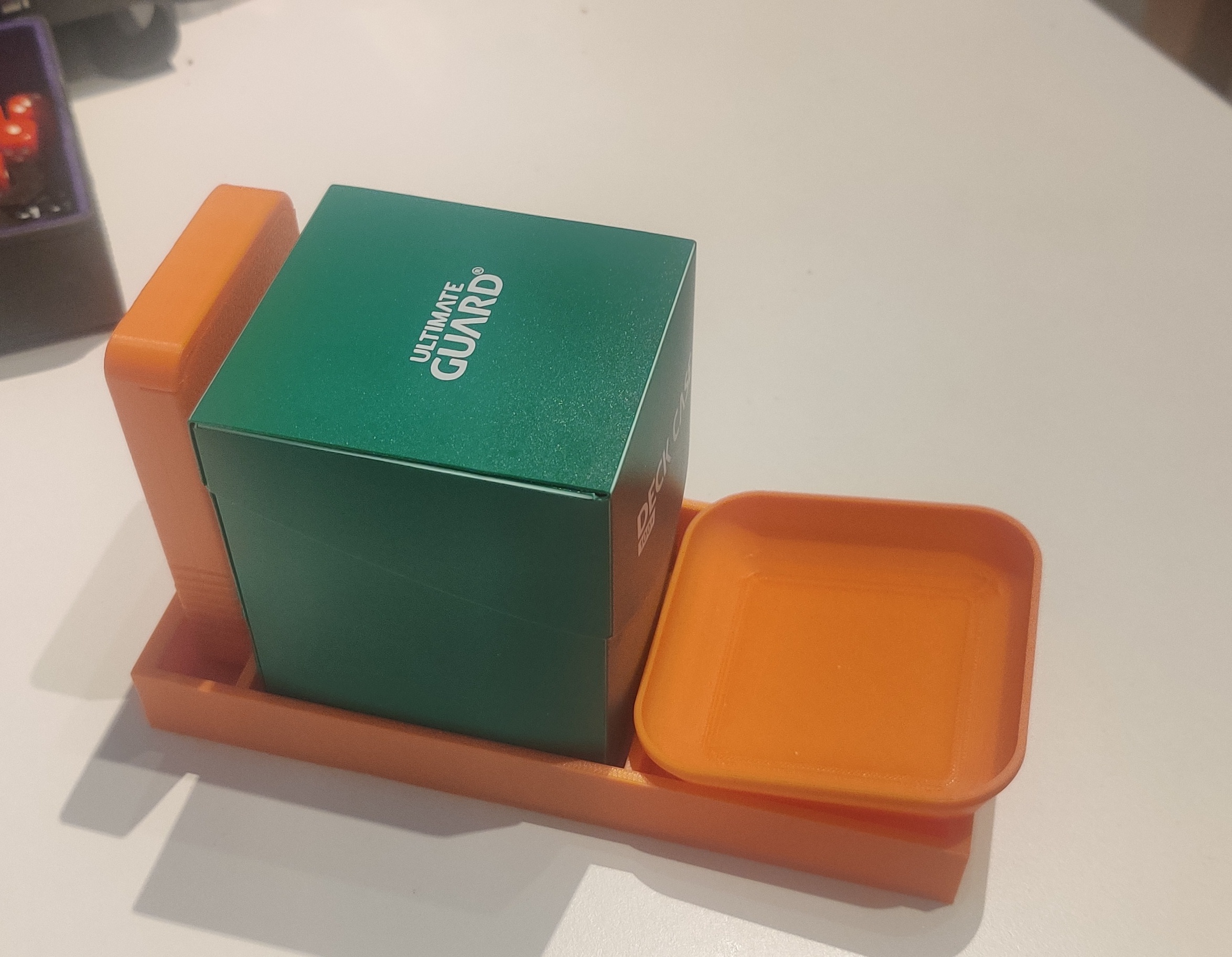
With the new print, the space for the token box is spot on but the space for using the tokens I forgot to adjust accordingly.
One thing I already know I want to add to the final version is rounded corners and I found out that one way to achieve those in TinkerCad is to search for a “MetaFillet” shape in Shape Generator, turning that into hole mode and aligning it with the corners.
Version 4
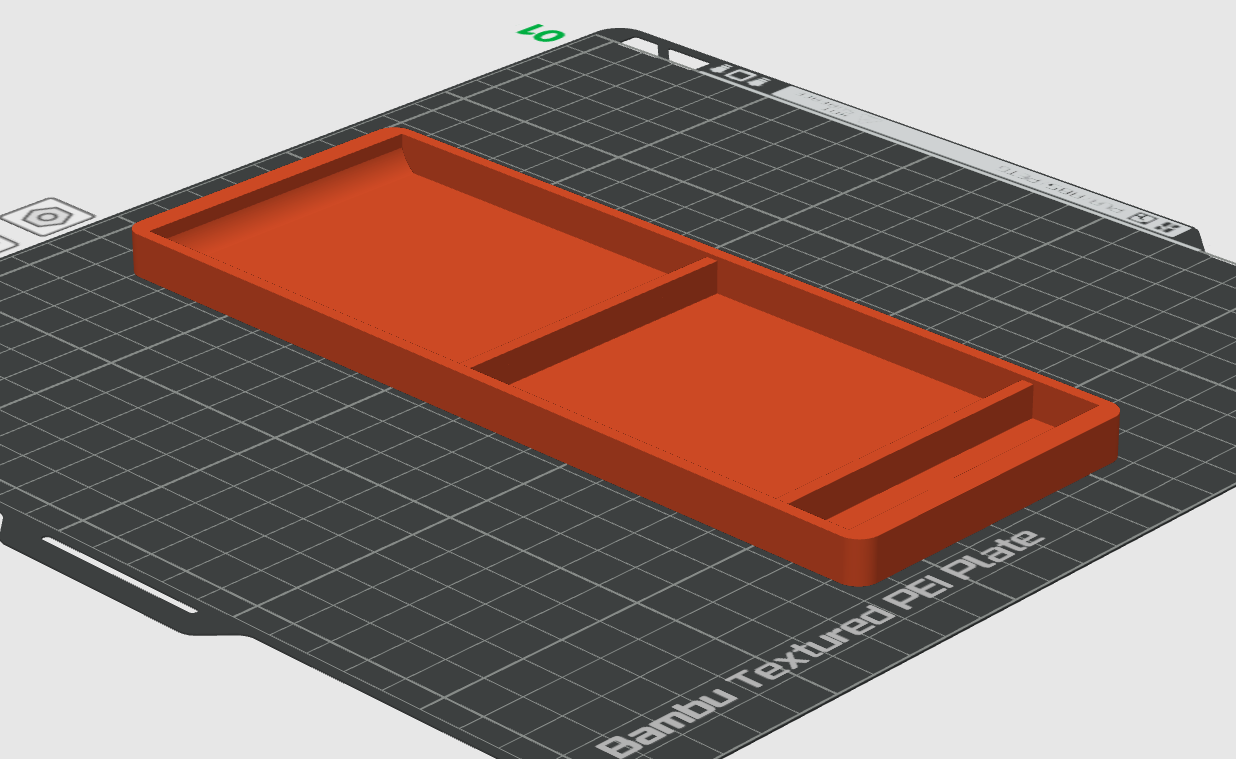
With the fourth design, I did multiple changes (I’m really bad at sticking to the “change one thing at a time” philosophy which usually backfires down the line):
- I brought the height of the walls back down now that I don’t need the depth for the pen holder. Less height means slimmer profile and less filament used.
- I increased the size for the token bowl
- I added curved edges inside the token bowl on both sides to make it easier to pick up dice and tokens
- I added rounded corners on the outside to make it less pointy.
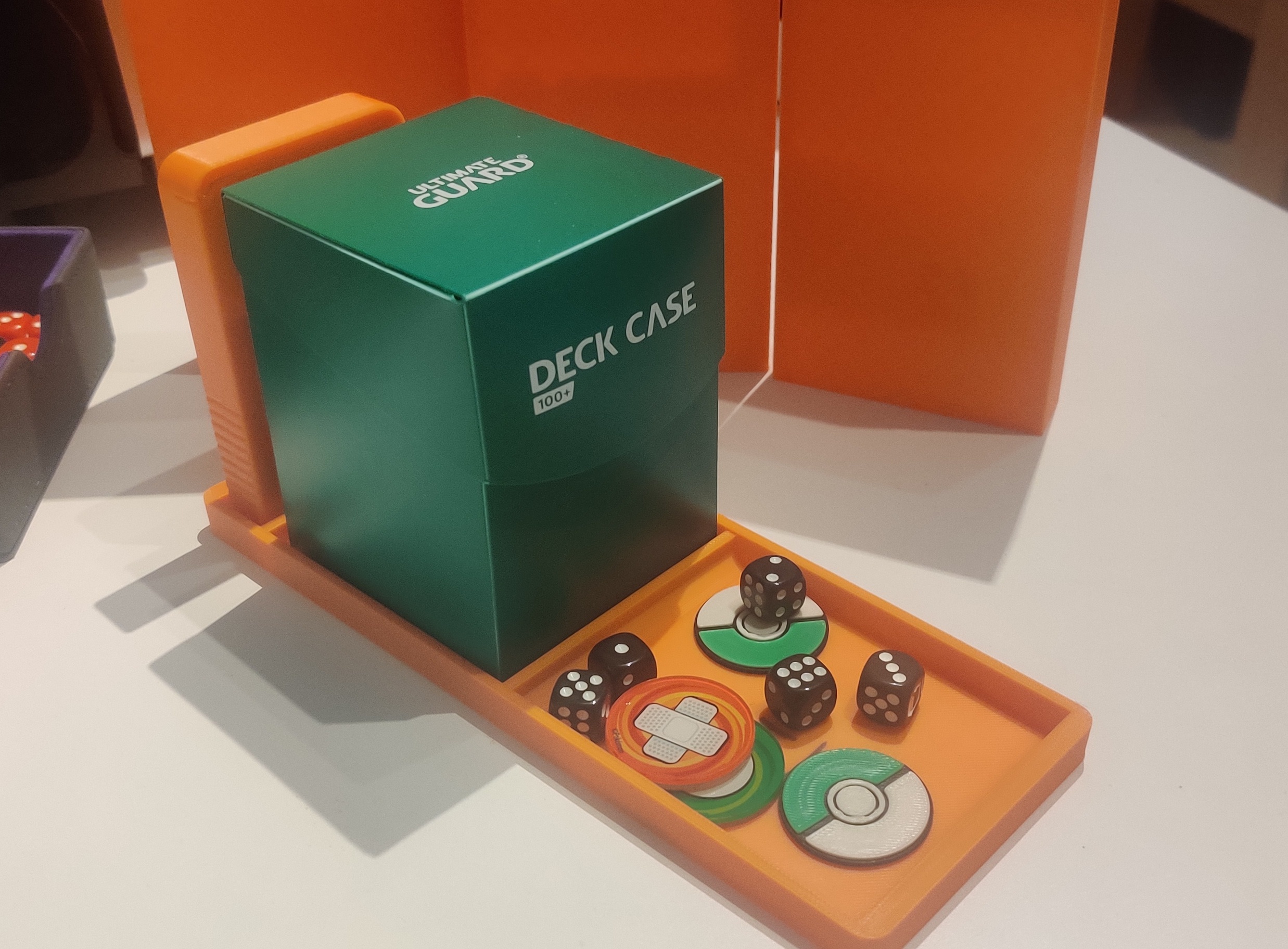
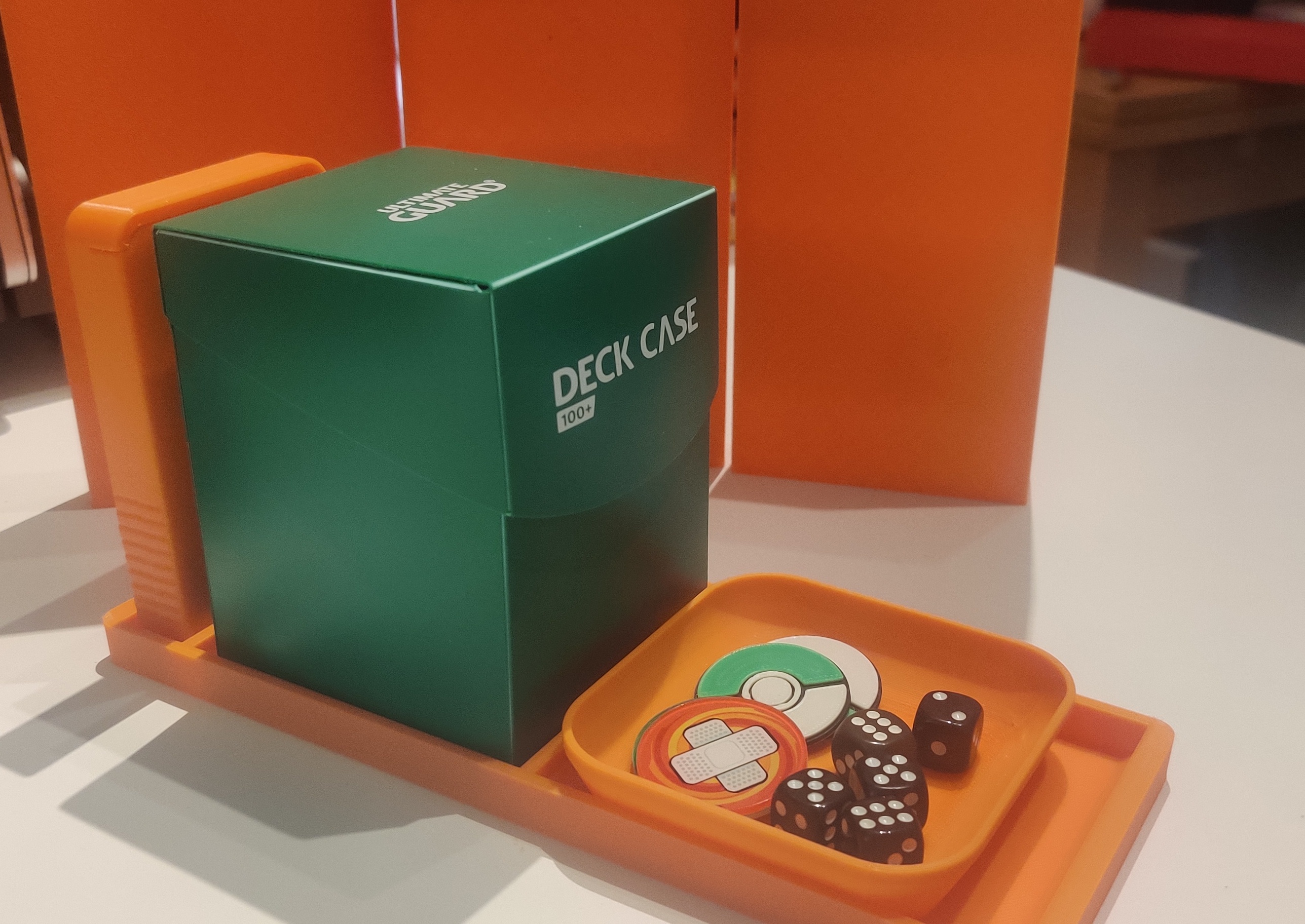
Now we’re talking! It works with the added bowl or without and everything else has a nice place to stay in. And with the new slimmer design, it doesn’t feel as bulky as the older versions.